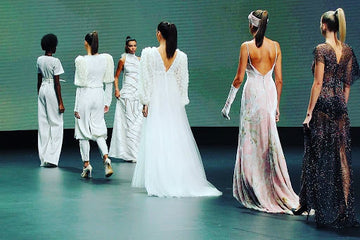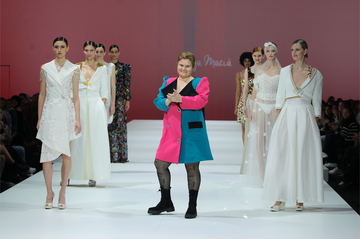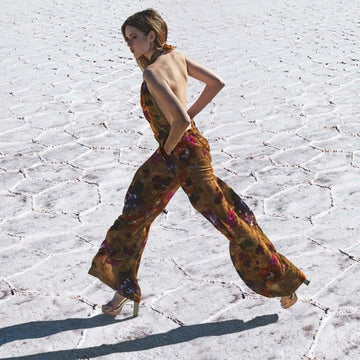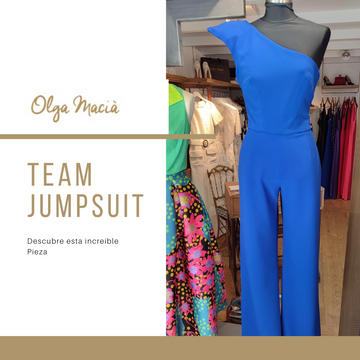 First of all, I would recommend that you put aside everything that other people tell you about how you should look that day. Sometimes important people in our lives, such as mothers, fathers or grandmothers, have an image of us that does not match our essence. And the worst thing you can do at this moment is to create a look thinking of pleasing others. Be true to yourself.
First of all, I would recommend that you put aside everything that other people tell you about how you should look that day. Sometimes important people in our lives, such as mothers, fathers or grandmothers, have an image of us that does not match our essence. And the worst thing you can do at this moment is to create a look thinking of pleasing others. Be true to yourself.That being said, let's move on to the most important elements of creating a wedding dress:
1.- Choose the cut: The first thing you should think about together with your designer is the style of the look and the dress. Do you like princess cut or mermaid cut dresses? Many times we have the dream of wearing a certain style of dress since we were little, but sometimes it is best not to face this decision with a closed mind, because I assure you that you will be surprised. I have seen many times brides who arrive with a preconceived idea but then end up with a totally different dress.
2.- Choose the neckline: Square, halter, boat neck, round are some of the options you have. At this point you should also pay attention to your body type.
If you have an inverted triangle shape, your perfect necklines are those that help to balance out the back area and narrow the waist. V-shaped or V-shaped necklines, asymmetrical and strapless.
For those with a pear-shaped body, you can opt for deep necklines as they draw attention to this part of the figure. V-shaped, round, square, boat and halter necklines.
For those with an apple-shaped body with more volume in the abdominal area, you can avoid round or boat necklines, those with rounded shapes.
The hourglass body type is the most harmonious and can choose all types of necklines, so you should pay attention to details such as the shape of your face and chest to make your final decision.
Finally, we have the rectangular body, which could enhance its sexiest side with fitted dresses and deep necklines.
3.- Choose the sleeves: This is an element that, although you may think it is different, is considered at the same time as choosing the neckline of the dress. This is because the sleeves of many dresses are created based on the neckline, so if you want a dress with sleeves, you must be realistic as they can help or hurt you. For example, more closed dresses widen the body, while sleeves can perfectly conceal details of your arms that you want to avoid. That is why not any sleeve will work for any dress and bride.
4.- Choose your train: Chapel train, cathedral train, royal train, watteau train or sweep train. In this case, the choice depends on the type of event you are organizing and comfort, which is a very important element. Many brides want a very long train to enter the church, but then they don't think that they will need constant help to reposition the train, which can get dirty and damaged, and may not be comfortable when moving or dancing. In conclusion, you should think not only about the entrance to the church but about the entire event.
5.- Choose the back: Brides rarely think about this detail, but a wedding dress should look ideal from every angle, and the back is very important to achieve this. Just as with the neckline, the back also has to be decided depending on the type of body we have or the details we want to hide and enhance. For example, for a bride with a wide back we should opt for a “V” back that makes it visually narrower.
6.- Choose the belt: Ribbon, bow, jewel… The final detail is in the belt and it is an art to decide which one to wear. Once again, the bride's own silhouette must be taken into account when choosing the size, style and colour of the belt. They always look perfect on tall and slim-bodied brides, as they help to divide the silhouette, harmonising it, while also serving to highlight the waist of brides with a straighter waist.
Now that you know the elements to take into account when designing a wedding dress, are you ready to let your imagination run wild?






